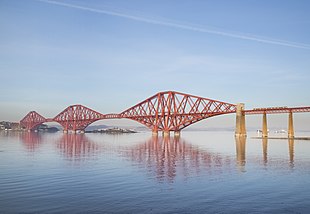
Back بناء مدرج Arabic Listed building Czech Adeilad rhestredig Welsh Listed building Danish Statutory List of Buildings of Special Architectural or Historic Interest German Monumento clasificado (Reino Unido) Spanish بنای فهرستشده Persian Monument classé (Royaume-Uni) French בניין רשום HE संरक्षित स्मारक Hindi

In the United Kingdom, a listed building[a] is a structure of particular architectural and/or historic interest deserving of special protection.[1] Such buildings are placed on one of the four statutory lists maintained by Historic England in England, Historic Environment Scotland in Scotland, Cadw in Wales, and the Northern Ireland Environment Agency in Northern Ireland. The classification schemes differ between England and Wales, Scotland, and Northern Ireland (see sections below). The term has also been used in the Republic of Ireland, where buildings are protected under the Planning and Development Act 2000, although the statutory term in Ireland is "protected structure."[2]
A listed building may not be demolished, extended, or altered without special permission from the local planning authority, which typically consults the relevant central government agency. In England and Wales, a national amenity society must be notified of any work to be done on a listed building which involves any element of demolition.[3]
Exemption from secular listed building control is provided for some buildings in current use for worship, but only in cases where the relevant religious organisation operates its own equivalent permissions procedure. Owners of listed buildings are, in some circumstances, compelled to repair and maintain them and can face criminal prosecution if they fail to do so or if they perform unauthorised alterations. When alterations are permitted, or when listed buildings are repaired or maintained, the owners are often required to use specific materials or techniques.[4]
Although most sites appearing on the lists are buildings, other structures such as bridges, monuments, sculptures, war memorials, milestones and mileposts, and the Abbey Road zebra crossing made famous by the Beatles,[5] are also listed. Ancient, military, and uninhabited structures, such as Stonehenge, are sometimes instead classified as scheduled monuments and are protected by separate legislation.[b] Cultural landscapes such as parks and gardens are currently "listed" on a non-statutory basis.
Cite error: There are <ref group=lower-alpha> tags or {{efn}} templates on this page, but the references will not show without a {{reflist|group=lower-alpha}} template or {{notelist}} template (see the help page).
- ^ "Principles of Selection for Listing Buildings" (.pdf). Department of Media, Culture and Sport. November 2018. Retrieved 5 December 2023.
- ^ "Protected Structures". citizensinformation.ie. Citizens Information Board. Retrieved 14 July 2021.
- ^ "Arrangements for handling heritage applications Direction 2015". gov.uk. Department for Communities and Local Government. 2015.
- ^ "A to Z Listed Buildings". Listed Building Surveyors. 1st Associated Ltd. 21 November 2014.
- ^ "The unusual buildings granted listed status". The Daily Telegraph. London. 8 June 2011. Archived from the original on 11 January 2022. Retrieved 9 June 2011.
- ^ Historic England. "Windsor Castle (Grade I) (1117776)". National Heritage List for England. Retrieved 10 January 2022.
- ^ Historic England. "Windsor Castle (Grade SM) (1006996)". National Heritage List for England. Retrieved 10 January 2022.
- ^ Cadw. "Raglan Castle (Grade I) (2101)". National Historic Assets of Wales. Retrieved 10 January 2022.
- ^ Cadw. "Raglan Castle (Grade SM) (MM005)". National Historic Assets of Wales. Retrieved 10 January 2022.
© MMXXIII Rich X Search. We shall prevail. All rights reserved. Rich X Search